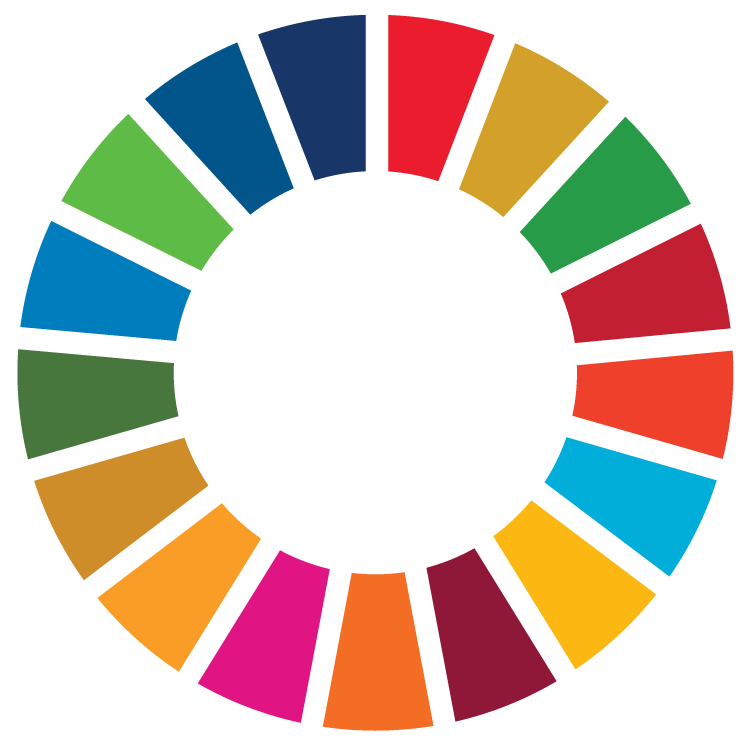Text traduït
Aquesta assignatura s'imparteix en anglès. El pla docent en català és una traducció de l'anglès.
La traducció al català està desactualitzada.
Consulta preferentment el text original!
Si ho prefereixes, consulta la traducció!
Texto traducido
Esta asignatura se imparte en inglés. El plan docente en español es una traducción del inglés.
La traducción al español está desactualizada.
¡Consulta preferentemente el texto original!
Si lo prefieres, ¡consulta la traducción!
Original text
This subject is taught in English. The course guide was originally written in English.
Course
Journalism
Subject
Languages of Communication
Type
Compulsory (CO)
Academic year
2
Credits
6.0
Semester
2nd
| Group | Language of instruction | Teachers |
|---|---|---|
| G11, classroom instruction, mornings | English | Jesica Ana Menendez Signorini |
Sustainable Development Goals (SDG)

- 16. Peace, justice and strong institutions
Objectives
Languages of Communication introduces main theoretical models to interpretative, discursive and narrative semiotics, as well as the different perspectives that communicational languages have analysed. We will apply these models to different textual, audiovisual and mediatic pieces in order to deeply understand them and address the debates that underlie these contents. Thus, this course provides theoretical knowledge to all students in order to ensure that they will be able to apply it to communication products and procedures and that they will be capable of relating those learnt concepts to their reality and environment.
Learning outcomes
- Identify the role of journalism in relation to society, human rights and social or personal diversity in all its dimensions, in a local, national and global context.
- Distinguish between theories of journalism, public opinion and discourse, and the languages of communication, and their paradigms and models of analysis and interpretation.
- Carry out professional or academic tasks and projects in complex environments through effective cooperation in diverse teams, both face-to-face and online, and through efficient use of digital resources.
Content
- Languages and the semiotic gaze
- Roland Barthes
- From the sign to the text
- Vladimir Propp and Algirdas Greimas
- Umberto Eco
- From text to texts
- Hypertext, intertextuality and transmedia narratives
- From texts to ideology
- Michel Foucault
- Constructionism, discourse analysis and psychoanalysis
- Prejudice, stigma, discrimination and intersectionality
Evaluation
Breakdown of the global grade of the subject:
- Required projects - Conceptual part | PODCAST PROYECT: 45%
- Part 1: 5%
- Part 2: 10%
- Part 3: 30%
- Follow up and monitoring tasks - Practical part: 25%
- Activities (1,2 & 3): 15%
- Essays (1 & 2): 10%
- Participation: 10%
- Specific evaluation tasks | Global Exam: 20%
Assessed tasks will be grouped together on a conceptual part and a practical part. Each of the parts needs to be approved separately. The practical part includes specific evidence and the elaboration of the analysis reports and exercises. The conceptual part includes carrying out a subject project with specific submissions and its evaluation is shared with Spoken English subject. Subject's final grade shall be determined by the average of both parts, as long as both are approved. Participation and follow-up meetings will also be assessed. The subject includes a global exam as individual evaluation assesment.
Methodology
The working methodology is divided between theoretical and practical sessions, where theoretical aspects are discussed emphasizing the various aspects of semiotic and communication. Work groups will develop, with the teacher, the various stages of the projects, exercises and examples to illustrate the topics discussed. We will combine different methodologies, such as videos, oral exhibitions, exercises, visuals and audio production, reading and understanding of texts. Students will participate in different types of sessions: Work sessions with the whole class, sessions in small groups with the teacher, and group tutoring sessions with the teacher.
Ways of grouping students: In order to carry out the various mandatory activities, small groups of intercultural exchange will be created, encouraging collaborative work between local and international students.
The content of the syllabus includes a conceptual/theoretical perspective and a practical/applied one:
- Conceptual/theoretical: theory classes and analysis of examples will be done to understand and apply the course's concepts. This part must be done in groups and individually. It will be assessed by the means of several exercises and practices where the application of concepts worked on the course will be required. Students will prepare and write the exercises in class or on their own and submit it in the Virtual Classroom. There will be mentoring sessions in order to follow-up the process with the students and solve their doubts.
- Practical/applied: it's done in groups and consists on a brief to develop an audio project (podcast). This project consists of a creative assignment where the contents of the subject shall be transformed into an audio product. This project will be prepared continuously through the whole duration of the course sharing its development with other subject: Spoken English.
Bibliography
Key references
- Cabruja, T.; Iníguez, L.; Vázquez, F. (2000). Cómo construimos el mundo: relativismo, espacios de relación y narratividad: (Núm. 25. Pp. 61-94). Análisis. Quaderns de comunicació i cultura.
- Cobley, P. i Jansz, L. (2004). Semiótica para principiantes. Era Naciente.
- Eco, U. (1997). Seis paseos por los bosques narrativos. Lumen.
- Foucault, M. (2013). El orden del discurso. Tusquets.
Further reading
Teachers will provide complementary bibliography and compulsory reading throughout the course via the Virtual Campus.